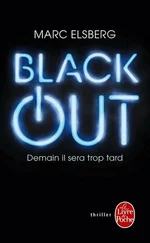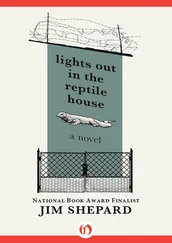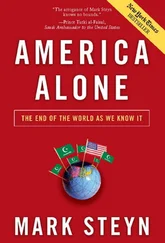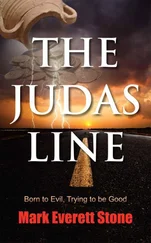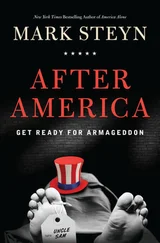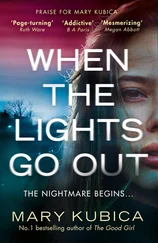So pretty much any Islamist terrorist, big or small, is a more interesting co-mingling of east and west than Updike’s Jersey boy. How’d that happen? The author certainly did his research, jamming it in at every opportunity. Ahmad’s imam, for example, draws the lad’s attention to a “rather amusing controversy over the scholarly dicta of a German specialist in ancient Middle Eastern tongues, one Christoph Luxenberg”. A couple of years back, if you recall, Professor Luxenberg suggested that the 72 black-eyed virgins business was a mistranslation and that it was actually 72 “white raisins” of “crystal clarity”. “I fear,” says Shaikh Rashid, “this particular revision would make Paradise significantly less attractive for many young men.”
Westernized Muslims are not without their drolleries. My old friend Ghazi Algosaibi, the Saudi Minister of Labour, may well be the funniest cabinet minister in the world. After some public skirmishing over my plans for the destruction of the House of Saud, he sent me a copy of his novel with the cutest inscription:
To Mark. Ambivalently, Ghazi.
And yet I’ll wager there’s not a mosque in North America where the imams rouse their young charges to destroy the enemies of Allah by engaging in wry disquisitions on metaphor, symbolism and literary interpretation. “Christoph Luxenberg” is a pseudonym: the author was advised not to publish his scholarly work The Syro-Aramaic Reading Of The Koran under his own name on the grounds that Muslims offended by the 72-raisin passage might decide to kill him. What Updike is doing here is imposing the default literary voice of English letters – amused irony – on a world in which it is largely absent and, in its rare occurrences, life-threatening. Islam is very literal: that’s one of the problems.
That said, Ahmad is a marvel of three-dimensional realization next to the novel’s Jews and Irish (pale green eyes, freckles, red hair, pale skin) and blacks (with names like Tylenol Jones), all tied together neatly and geometrically: the Jewish guidance counsellor’s lardbutt wife’s sister is a secretary at the Department of Homeland Security who blabs incessantly. And Updike gets Ahmad a gig delivering furniture solely for the purpose of being able to conceal the dough for the terrorist operation inside an ottoman. An Ottoman! Geddit? You can’t help feeling that real cells would find less clunky conveyances for cash disbursement and, if they were forced into using furniture, would be more likely to deploy a La-Z-Boy recliner. But an ottoman is the kind of pointedly elegant visual image you need a big-time novelist for.
By the time we reach the end, and the Manhattan crowd scenes with each denizen “impaled live upon the pin of consciousness”, the author seems to be recycling discarded metaphors from his 9/11 dispatch. Two years ago, a first-time novelist, Lorraine Adams, wrote a book called Harbor about Algerian illegal immigrants in Boston (and, briefly, Montreal). Like Updike, Miss Adams tells the story from the Muslim fellow’s point of view, and sympathetically. But, unlike him, she brings to life a weird particular world in which innocent acts – frequent visits to a storage locker – can attract all the wrong kind of attention. In its artifice of self-delusion, Updike’s book is enough to make one despair of the novelist’s art: this is one of the most numbingly inadequate attempts to engage a major subject I’ve ever read. Or, as he’d say, its strange inky rivulets fall straight down like an elevator.
ADDITIONAL INDICTMENT #2
Skank battles
Maclean’s, February 8th 2007
T HE ENEMY At Home: The Cultural Left And Its Responsibility For 9/11 is the geopolitical If I Did It . As you may recall, that was the title of the artful tome by OJ Simpson no sooner announced than yanked from the warehouses and pulped by its publisher. But its general thrust was: OJ isn’t saying he did do it but if he had done it he’d have done it like this. Likewise, Dinesh D’Souza’s new book: he’s not saying he wants a gig as the jihad’s marketing consultant but, if he were, this is pretty much the critique of America he’d have offered to buck up the lads in the cave on September 10th 2001.
It’s impressive stuff. Why do they hate us? Hey, that’s easy. D’Souza has rounded up a ton of denunciations of the Great Satan’s appetite for “fornication, homosexuality, intoxicants, gambling, and trading with interest” (to cite Osama bin Laden himself). Quote after quote about America’s godless sodomites jostle on the page like eye-catching young lads in a San Francisco bathhouse on a Saturday night in 1978: Human rights for homosexuals? “What human? What rights?” scoffs a columnist for the Egyptian newspaper Al Akhbar . After a couple of pages of such zingers, D’Souza usually feels obliged to distance himself:
However uncharitable these sentiments…
And occasionally one can almost hear his editor at Doubleday urging the author to make the distancing a little less perfunctory:
However uncharitable these sentiments – and I find them appallingly so…
Much better! Distance-wise, that’s a good foot and a half. D’Souza’s publisher has taken out advertisements at US conservative magazines under the slogan “Let The Debate Begin”, but debate-wise his conservative confrères seem to have stampeded for the cone of silence. So let me tiptoe in. D’Souza lays his argument out on page one:
“The cultural left and its allies in Congress, the media, Hollywood, the nonprofit sector, and the universities are the primary cause of the volcano of anger toward America that is erupting from the Islamic world… Without the cultural left, 9/11 would not have happened.” American conservatives should understand that “moderate Muslims” around the world are their natural allies in resisting “the enemy at home”.
Er, okay. Before we get to that, let’s acknowledge what D’Souza gets right. He’s correct to bemoan what he calls the “ethnocentrism” of much western analysis of Islam. Take Patty Murray, Washington State’s senator (Democratic), and her bizarre assertion that Osama bin Laden’s popularity is due to EU-Canadian-sized social-welfare programs:
He’s been out in these countries for decades, building schools, building roads, building infrastructure, building daycare facilities, building health-care facilities, and the people are extremely grateful.
This is not just, as they say in Britain, bollocks on stilts but bollocks on such dizzying stilts as to put Senator Murray’s head way up in cloud-cuckoo land. Al-Qaeda has never built a single “daycare facility”, and they never will. Why? Because they believe Islam, like most traditional societies (including ours, until a generation or two back) already has a perfectly good “daycare facility”: the home. For a mother to leave her children to be raised by strangers while she goes to work at the convenience store would not strike most Muslims as societal progress. Maybe they’re wrong, maybe they’re right. But we ought at least to see the difference. Especially if we’re one of only a hundred out of 300 million people who get to be a US senator.
Patty Murray was a relatively lonely cheerleader for Osama bin Laden’s daycare program. But D’Souza identifies a much more widespread and dangerous form of “ethnocentrism” in the photographs from Abu Ghraib. For hysterical liberal ninnies, this was (and remains) a shocking exposé of torture. The question for western commentators was very simple: How far up the chain of command did authorization for these revolting techniques go? Faced with a guy being led around on a dog collar with female panties on his head and a banana sticking out his butt, the anti-war crowd wanted to know whether the Attorney-General had issued a memo on the use of tropical fruits in interrogation techniques and whether there was a smoking-gun invoice at the Pentagon revealing massive bulk purchases from Victoria’s Secret. The larkier conservative commentators scoffed: Anyone who’d spent ten minutes in an Iraqi – or Syrian or Egyptian or Saudi or Yemeni – prison would not regard the Abu Ghraib scenes as torture.
Читать дальше

